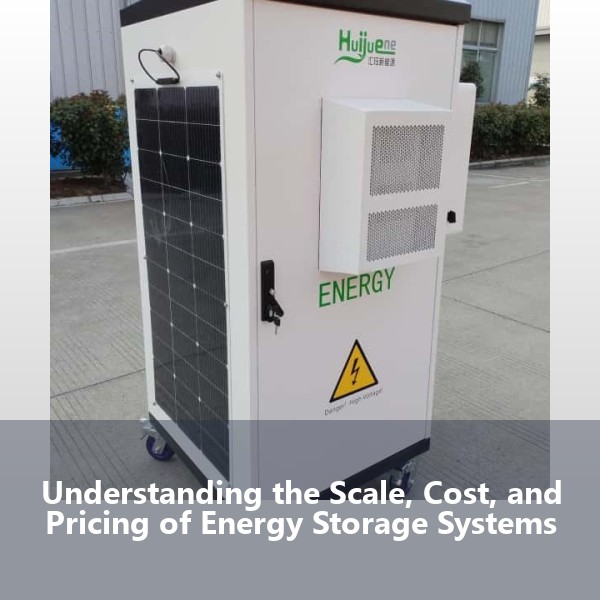Understanding the Scale, Cost, and Pricing of Energy Storage Systems

Why Energy Storage Economics Are Keeping CEOs Up at Night
Let's cut to the chase: the scale, cost, and pricing of energy storage are reshaping global energy markets faster than a Tesla Plaid hits 60mph. While lithium-ion batteries get all the headlines (and meme stocks), the real story lies in how scaling production and evolving technologies are creating wild price swings. Did you know the levelized cost of battery storage dropped 89% between 2010-2023? That's like watching a SpaceX rocket descend – except this price plunge shows no signs of stopping.
The Current State of Energy Storage Costs
Battery Technologies Leading the Charge
- Lithium-ion: $139-$210/kWh (like buying a smartphone battery the size of your couch)
- Flow batteries: $315-$504/kWh (the luxury sedans of storage)
- Pumped hydro: $106-$200/kWh (the OG of grid-scale storage)
Here's where it gets juicy: Tesla's 2023 Megapack installations achieved $97/kWh for utility-scale systems. That's cheaper than some craft beers per kilowatt-hour. But wait – these numbers don't tell the whole story. Installation costs, balance-of-system components, and soft costs can add 30-50% to the sticker price.
How Scale Impacts Energy Storage Pricing
The magic word? Gigafactories. When CATL opened its 100 GWh facility in 2022, battery cell costs dropped 18% in six months. It's the "Costco effect" – buying cathode materials by the railroad car instead of the pallet. But scale works differently across technologies:
| Technology | Scale Impact | Real-World Example |
|---|---|---|
| Lithium-ion | 15-20% cost reduction per doubling of production | BYD's Blade Battery production |
| Hydrogen Storage | 30%+ reduction with large electrolyzers | Shell's 200MW REFHYNE project |
The Learning Curve Paradox
Here's a head-scratcher: While battery prices keep falling, the balance of plant costs are becoming the new bottleneck. Inverter prices only dropped 4% annually since 2018 – it's like having a Ferrari engine paired with bicycle tires.
Pricing Models That Are Shaking Up the Market
- Storage-as-a-Service (STaaS): Like Netflix for electrons – pay monthly instead of upfront
- Virtual Power Plants (VPPs): Your home battery becomes part of a grid-scale orchestra
- Merchant Storage: Playing the electricity market like Wall Street day traders
Arizona's Sonoran Energy Center deal broke records with $13.50/kW-month capacity payments. That's storage economics working harder than a solar panel in the Sahara. But wait – these models depend on something trickier than quantum physics: electricity market regulations.
The Hidden Costs Nobody Talks About
Let's get real. The industry's dirty little secret? Thermal management costs can eat 15-20% of a battery system's budget. It's like spending $20k on a sports car then another $5k on air conditioning. Other sneaky expenses:
- Cycling degradation (batteries get tired too!)
- Recycling fees – currently $4-$12/kWh (ouch)
- Insurance costs rising faster than a battery fire meme
Case Study: Texas Freeze 2021
When winter storm Uri hit, battery operators who'd invested in cold-weather packages made bank – others saw systems fail faster than a politician's promise. The lesson? Right-sizing matters more than raw $/kWh metrics.
Future Trends: Where Prices Are Headed
BNEF predicts $58/kWh for lithium-ion packs by 2030 – cheaper than your average takeout dinner. But the real game-changers are:
- Sodium-ion batteries (no lithium, no cobalt, no problem)
- Gravity storage (literally dropping weights down mine shafts)
- Second-life EV batteries (giving retired car batteries a nursing home career)
California's Moss Landing facility now uses AI-driven bidding algorithms that make more daily trading decisions than the NYSE. It's storage economics meets Wall Street quant trading – with less cocaine but similar energy.
The Hydrogen Wild Card
While everyone's buzzing about green H₂, current storage costs at $15-$23/kg make it pricier than Dom Pérignon. But scale this decade could change that faster than Elon changes Twitter/X policies.
How to Navigate This Pricing Jungle
- Always calculate LCOS (Levelized Cost of Storage), not just upfront costs
- Factor in 2-3% annual O&M cost increases (batteries age like milk, not wine)
- Diversify tech – like having both solar and wind in your portfolio
Remember, the cheapest storage system is the one that matches your specific discharge profile. Buying a Ferrari battery for grocery store runs makes as much sense as... well, actually buying a Ferrari for grocery runs.
- Pre: Energy Storage Hedge: Your Secret Weapon Against Volatile Power Prices
- Next: Energy Storage Textiles Fabric Market Landscape in 2018
Related Contents

Compressed Air Energy Storage Power Plants: The Future of Grid-Scale Energy Storage?
Imagine your bicycle pump as a giant underground battery. That’s essentially what compressed air energy storage (CAES) power plants do—but with enough juice to power entire cities. As renewable energy sources like wind and solar dominate headlines, these underground storage marvels are quietly solving one of green energy’s biggest headaches: intermittency. Let’s dive into why CAES technology is making utilities sit up straighter than a compressed gas cylinder.

Grid-Scale Energy Storage Systems and Applications: Amazon's Strategic Moves in the Energy Transition
Imagine a world where your Prime delivery trucks run on solar-charged batteries and AWS data centers hum along on nuclear-powered storage systems. This isn't science fiction – Amazon's recent $500 million nuclear power investments and leadership in solar+storage projects reveal how tech titans are rewriting the rules of energy infrastructure. As AI-driven power demands skyrocket (data centers now consume enough electricity to power medium-sized countries), grid-scale storage has become the linchpin of corporate energy strategies.

Energy Storage Systems for Renewable Energy: The Unsung Heroes of the Clean Energy Revolution
Let’s face it – renewable energy sources can be as unpredictable as a cat on a caffeine buzz. One minute your solar panels are soaking up sunshine like overachievers, the next they’re napping during cloudy weather. This is where energy storage systems for renewable energy become the Batman to your solar panels’ Robin. These technological marvels don’t just store power; they’re reshaping how we think about energy reliability in the 21st century.
